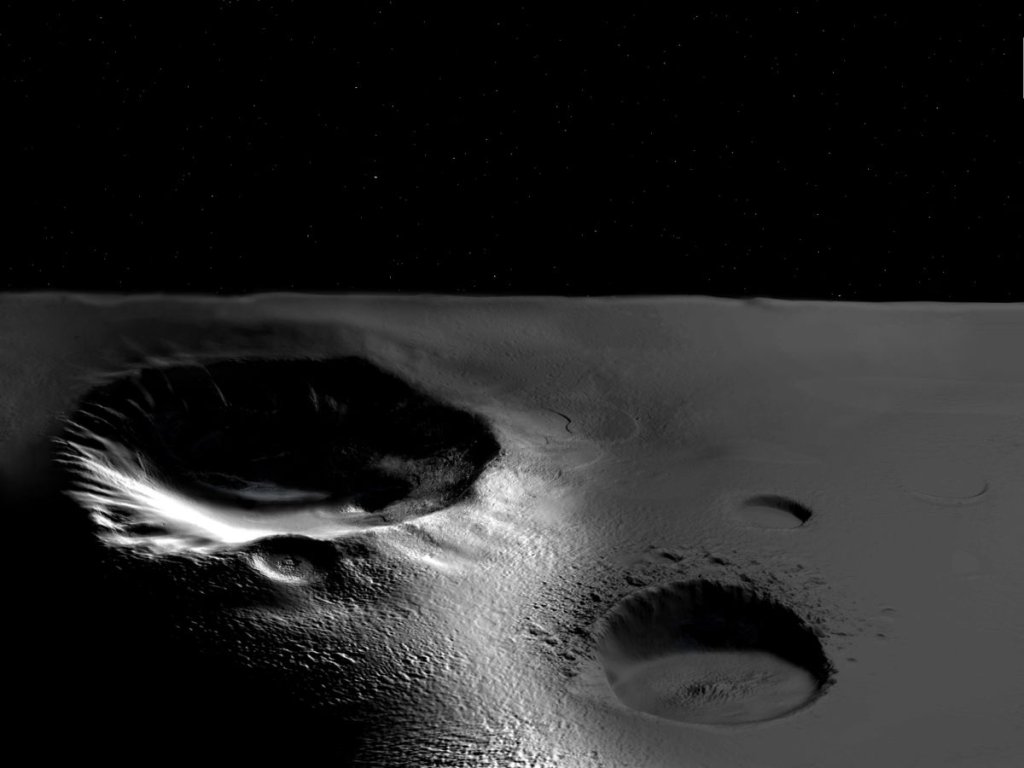Israeli startup WeSpace Technologies wants to put its robotic footprint on the moon.
The company aims to provide autonomous lunar hopper drones, which will deliver customer payloads to hard-to-reach regions of the moon.
WeSpace was founded in 2019 by CEO Yifat Feffer and chief technology officer Yigal Harel, the latter of whom previously helmed the pioneering Beresheet lunar lander program for the Israeli organization SpaceIL. Beresheet, a four-legged stationary probe, crashed into the moon’s surface during its landing attempt in April 2019. Harel and Feffer established WeSpace that same year, with aspirations for a much more complex lunar vehicle.
Related: 1st map of moon water could help Artemis astronauts live at the lunar south pole
WeSpace is touting the hopper as a highly capable autonomous spacecraft with the ability to zip around the moon using thrusters to fly from location to location, hover above specific areas or deliver payloads somewhere on the surface — and possibly even beneath it.
The company views the current means of exploring the lunar surface — mainly via rovers — as inadequate to help develop an emerging lunar economy. The company’s website lists the spacecraft’s advantages over other vehicles, including the ability to explore the moon’s underground lava tubes and operate autonomously in permanently shadowed regions, areas thought to be rich in water ice that are, unfortunately, also essentially communication “dark” zones.
“Our Autonomously Flying Robotic Systems will perform a diverse set of lunar missions and retrieve valuable information about in-situ resources such as water, metals and minerals. It will carry scientific and engineering sensors, search for habitation potential sites and retrieve valuable data for our customers’ needs, especially in hard-to-reach areas where nobody else is capable of doing so,” the WeSpace website (opens in new tab) states.
NASA is planning on sending humans back to the moon on the Artemis 3 mission, currently scheduled for 2025. Beyond that, the agency hopes to establish a permanent lunar outpost near the moon’s south pole as a staging ground for future outposts on Mars. The infrastructure to support a permanent presence on the moon or Mars is partially dependent on the availability of locally sourced resources to augment supplies sent from Earth, known as in situ resource utilization (ISRU).
Now, WeSpace is vying to represent Israel as a part of NASA’s Artemis program. After consultation with project managers at NASA, WeSpace seems confident its lunar hopper design will fit the Artemis program’s mobility requirements nicely. The company thinks its drone will launch on its first lunar mission less than three years from now, according to a report from PayloadSpace.com (opens in new tab).
The hopper’s capabilities would have far-reaching applications for Artemis, scientists across NASA and countless research institutions, as well as commercial entities interested in moon mining and other lunar exploration, WeSpace believes — all of which the company expects will be part of a booming lunar economy in the coming decades.
Follow us @Spacedotcom (opens in new tab), or on Facebook (opens in new tab) and Instagram (opens in new tab).

